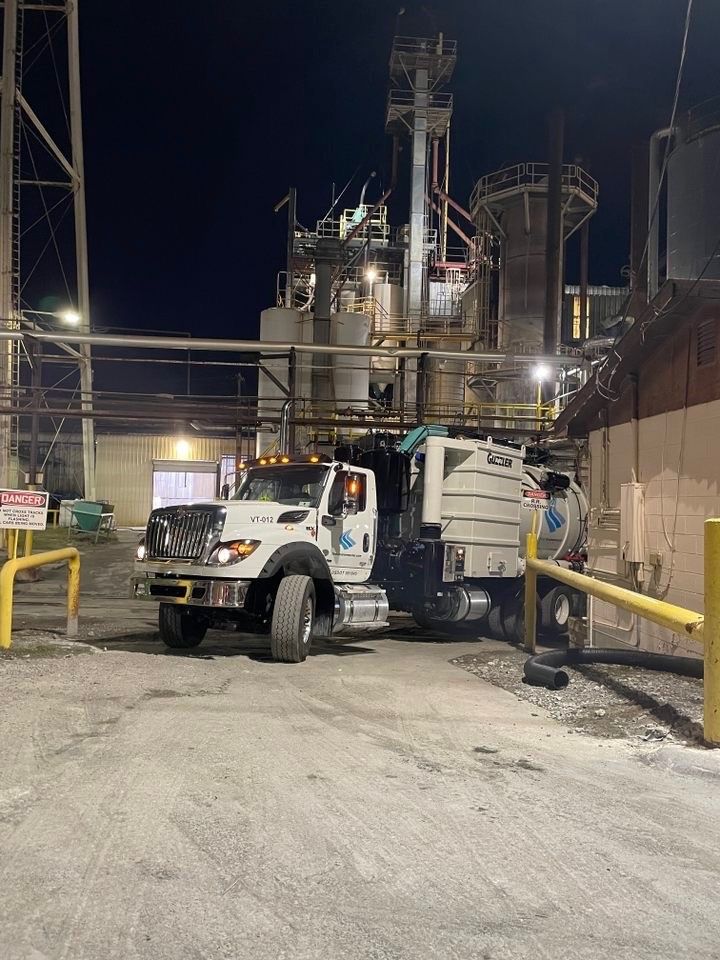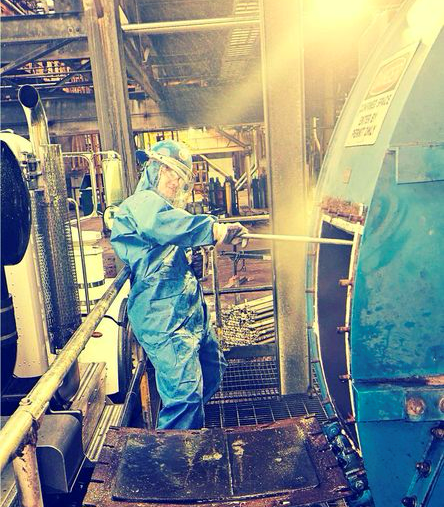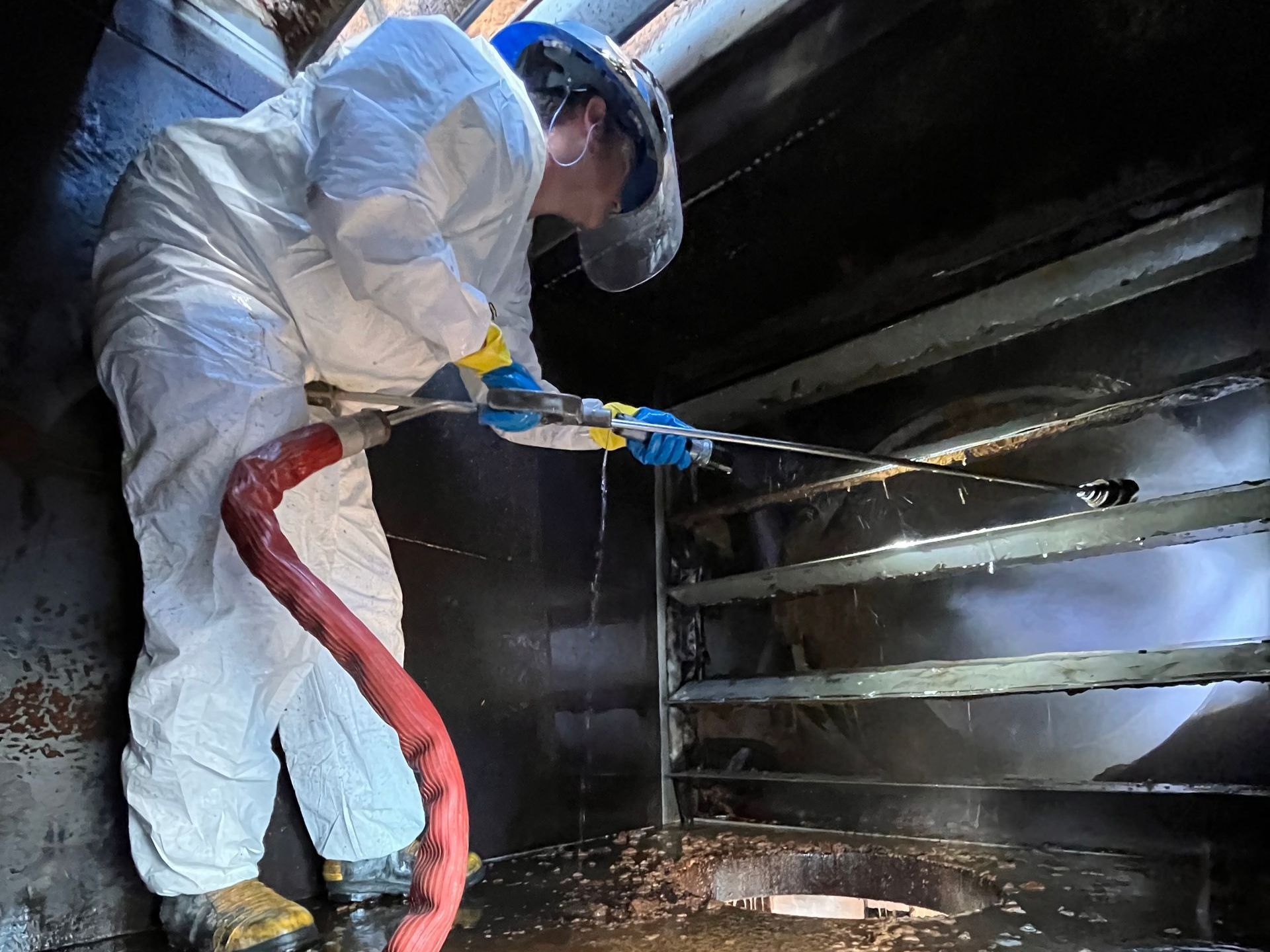Containers for Environmental and Industrial Cleaning Support
As we wrap up 2022, I realized we had not talked about containers. While we use them on a regular basis for our industrial cleaning projects, they are often lost in the shuffle of the “cleaning” part of the project because we focus on the area that is getting cleaned. Therefore, let us learn about these containers, what they are, why we use them, and when they may be a need for your company.
Bulk Container Types-Solids
The most common container used by industry is the roll-off box , it is basically a rectangle with an open top (also called “open-top bins”). Our standard-size roll-off box is 20 yds (basically 20 cubic yards of space). Most trash companies provide a 30-yds roll-off, so a little larger and higher sides (think of the big boxes in the back part of a parking lot or behind most facilities) to allow more trash collection. The next step up from these is a 40-yds, typically with even higher sides (think a 20-yds box times 2, but vertically). There are also larger sizes, 50-yds and higher, but they have some limitations. Most importantly, if the boxes are going to be shipped over the road, there are DOT weight limit requirements for hauling. The larger the container size, the lighter the material will need to be to stay under weight limits. Soil can be heavy, so usually smaller containers are the best choice. Trash and industrial debris can be a little lighter, so the 30-yds boxes from trash companies make sense, you just have to be aware of weight. 40-yds and greater have to be really light materials or more commonly odd-sized materials that end up needing the space but leave a lot of air space in the boxes (metals for recycling are like this).
Another container that is particularly useful is the vacuum box . It is heavier than a standard roll-off box because it has an enclosed top . Commonly, a 25-yds box, and holds about 3000 gallons. Sludges and solids can be managed via these boxes (for liquids see tankers below). Their specific function is to capture materials from a cleaning/vacuuming process. This is accomplished by connecting the box to a vacuum truck and applying the vacuum through the box to the “cleaned” area and pulling the residual materials to the box, where they drop into the container before reaching the vacuum truck. It is a highly effective tool in capturing material for easier disposal management.
Bulk Container Types-Liquids
Frac Tanks are the most common large-volume containers. They hold approximately 18,000 gallons. To be sure, there are varying configurations so the volume will change depending on the internal structure. Some of these tanks are engineered for holding liquids, others have separation equipment (weirs, oil-water separating, etc…). They are designed to contain liquids, but they are not for transport .
Poly Cubes are a similar cousin to the frac tank in that they are specifically for holding liquids as well, but because of their poly construction, they are better suited to chemical materials that would not be compatible with metals (examples: acids/bases). The standard Poly Cube is ~6000-gallon capacity, so a little smaller footprint than a frac tank.
Tankers are also an option and one that can be transported. Standard sizes are around 5000 gallons. Some will have pumps on the tankers, others are only a vessel to transport liquids. Either option provides a transportable tank, and the conveyance of the materials is by pump, gravity feed, or external process.
Non-Bulk Container Types
Drums are probably the most common non-bulk container. They come in various types including metal, poly (plastic), and fiber, and may contain liners for different compatibilities. The workhorse of the industry is a 55-gallon drum, and they can be open-top or closed-top. For the open-top drums, the entire lid can be removed. The open-top lids can be bolt-tightened or can close with a quick-lock action. There are also smaller-sized drums and pails.
Totes are the next size up for liquids, and similarly, come in various constructions, but the most common are poly construction (think hard plastic bladder) within a metal frame. The typical size is 275 gallons. There are also larger totes at 330 gallons that are common for chemical materials, and they are usually a more durable construction for repeated use.
First Environmental works with our customers to find the most-effective approach to managing the resultant materials from their projects. Whether we are helping with waste disposal or working within your current disposal management plan, we do our part to make it easy for you.
We would be glad to look at any of your industrial cleaning projects and provide options, including containers, as needed. Wishing all a prosperous 2023!
To schedule a cleaning service or to speak with a representative about other industrial cleaning services call First Environmental today.





